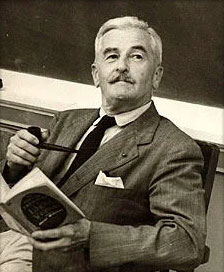Dry September” is a short story by William Faulkner. Published in 1931, it describes a lynch mob forming (despite ambiguous evidence) on a hot September evening to avenge an alleged (and unspecified) insult or attack upon a white woman by a black watchman, Will.
Told in five parts, the story includes the perspective of the rumored female victim, Miss Minnie Cooper, and of the mob’s leader, John McLendon. It is one of Faulkner’s shorter stories.
As a town creeps into September with nearly two months of heat and no rain, the tension is palpable. On a Saturday evening, a rumor burns through the town that Miss Minnie Cooper has been in some way attacked by a Negro and so the town’s men meet in the local barbershop to contemplate what needs to be done. They have decided it is Will Mayes, regardless of their proof.
And they debate wha tto do. One barber continues to insist that it may not have been Will and that they are jumping to conclusions without any proof. However, the men’s fervor is raised enough that they become accusational of the barber and deride him for trusting a black man over a white woman. Others show up who continue to fuel the discontent with what has supposedly happened.
Eventually, it’s clear that regardless of a crime, they are intent on doing harm to a black man just to keep others from thinking they can. Finally, they gather up and head out to find Will Mayes. The story then shifts to Minnie. She was agreeable but not particularly spectacular in her town. As she grew older, she became less and less interesting and appealing–particularly to the single men. In her older years, many assume she has committed adultery and other questionable behaviors to entertain herself. She lived in a home, taking care of her mother.
After this introduction, the story returns to the mob. The reluctant barber joins the mob with the hopes of talking them out of it. They manage to capture Will and he seems oblivious to why they have captured him, cuffed him and are threatening him. They beat him into submission and get him into the car.
The barber insists on getting out but the leader won’t stop and tells him to jump, which is what he ultimately does. He stays to the side of the roads and eventually, sees the cars returning with Will. The story returns to Minnie who is going into the town with her friends and many are whispering about what happened to her and teo Will. When she enters the movie theater, she begins to laugh hysterically.
They eventually bring her home and request the doctor. But the laughing gives way to screaming. Her friends finally wonder if anything actually happened. The story finally moved to the leader of the mob who has returned home. His wife is waiting him and he throws her aside, scolding her for staying up. He does on to wash himself and go to bed.
It was originally published in Scribner’s magazine, and later appeared in collections of his short stories.
It includes an appearance by Hawkshaw, the barber who was the focus of Faulkner’s later story, “Hair”
